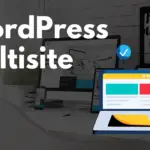Crafting a compelling online presence goes far beyond just having a website. It involves understanding the nuances of search engine optimization (SEO), and a crucial component of that is mastering the art of SEO meta tags. These seemingly small snippets of code play a significant role in how search engines like Google understand and rank your content, ultimately impacting your website’s visibility and organic traffic. This guide will delve into the world of meta tags, exploring their purpose, importance, and how to effectively optimize them for SEO success.
Understanding SEO Meta Tags
What are Meta Tags?
Meta tags are HTML snippets that provide metadata (data about data) about a webpage. They reside within the “ section of an HTML document and are not visible to the average website visitor. Instead, they provide information to search engines and other web crawlers. They communicate details like the page’s title, description, keywords, and other important information.
Why are Meta Tags Important for SEO?
While their direct impact on rankings has evolved, meta tags remain essential for SEO for several reasons:
- Improved Search Engine Understanding: Meta tags help search engines understand the context and content of your page. This allows them to accurately index and rank your page for relevant search queries.
- Enhanced Click-Through Rate (CTR): The meta description, in particular, significantly influences the click-through rate from search engine results pages (SERPs). A compelling and relevant meta description can entice users to click on your link, leading to increased traffic.
- Social Sharing Optimization: Meta tags like Open Graph tags control how your content appears when shared on social media platforms, ensuring accurate previews and branding consistency.
- Website Usability: Some meta tags, like the viewport meta tag, are crucial for ensuring your website is responsive and displays correctly on different devices, contributing to a better user experience, which indirectly impacts SEO.
Common Types of Meta Tags
Here’s an overview of some of the most common and important meta tags:
- Title Tag: While technically not a “meta tag” it resides in the “ section and is a crucial ranking factor. It’s displayed in the browser tab and as the headline on SERPs.
- Meta Description: Provides a brief summary of the page’s content. It’s often displayed beneath the title tag in search results and aims to attract clicks.
- Robots Meta Tag: Instructs search engine crawlers on how to treat a page. It can tell them to index the page, follow links, or prevent indexing.
- Viewport Meta Tag: Controls how the page scales on different devices, essential for responsive design.
- Open Graph (OG) Tags: Used to control how your content is displayed when shared on social media platforms like Facebook, Twitter, and LinkedIn.
- Twitter Cards: Similar to Open Graph tags, but specifically for Twitter.
- Charset Meta Tag: Specifies the character encoding for the webpage, ensuring that characters are displayed correctly.
Optimizing the Title Tag
Importance of the Title Tag
The title tag is one of the most critical SEO elements. It’s a direct ranking factor and is prominently displayed in search results, making it the first thing users see. A well-optimized title tag can significantly improve your website’s visibility and click-through rate.
Best Practices for Title Tag Optimization
- Keyword Inclusion: Include your primary keyword naturally at the beginning of the title tag, if possible.
- Keep it Concise: Aim for a length of 50-60 characters to avoid truncation in search results. Google typically displays the first 50-60 characters of a title tag.
- Uniqueness: Ensure that each page on your website has a unique title tag to avoid confusion and potential penalties.
- Brand Name: Include your brand name towards the end of the title tag to reinforce brand recognition.
- Accurate Representation: The title tag should accurately reflect the content of the page.
- Example: `Buy Organic Coffee Beans Online | [Your Brand Name]`
Crafting Compelling Meta Descriptions
The Role of the Meta Description
The meta description doesn’t directly impact rankings, but it’s a crucial element for attracting clicks from the SERPs. A compelling meta description can significantly improve your website’s click-through rate (CTR), which indirectly signals to Google that your page is relevant and valuable.
Writing Effective Meta Descriptions
- Character Limit: Keep your meta descriptions under 160 characters to prevent truncation in search results. Google may choose to display a different snippet if it deems it more relevant.
- Value Proposition: Highlight the benefits of visiting your page. What problems will the user solve by clicking on your link?
- Call to Action (CTA): Encourage users to take action by including a clear call to action, such as “Learn More,” “Shop Now,” or “Get Started.”
- Keyword Inclusion: Include your target keyword naturally within the meta description.
- Match Content: Ensure the meta description accurately reflects the content of the page. Avoid misleading or clickbait descriptions.
- Uniqueness: Each page should have a unique meta description. If you don’t provide one, Google will automatically generate a snippet from your page’s content.
- Example: `Discover a wide selection of organic coffee beans at [Your Brand Name]. Freshly roasted, ethically sourced, and delivered right to your door. Shop now and enjoy the perfect cup!`
Utilizing Robots Meta Tags for Crawl Control
Understanding Robots Meta Tags
Robots meta tags give you control over how search engine crawlers interact with your pages. They allow you to specify whether a page should be indexed, whether links on the page should be followed, and more.
Key Directives for Robots Meta Tags
- `index`: Allows search engines to index the page. This is the default setting, so you don’t need to explicitly include it unless you’re overriding a higher-level directive.
- `noindex`: Prevents search engines from indexing the page. Use this for pages that are not meant to appear in search results, such as internal documentation or thank-you pages.
- `follow`: Allows search engines to follow links on the page. This is also the default setting.
- `nofollow`: Prevents search engines from following links on the page. This can be useful for controlling the flow of link equity or disavowing potentially harmful links.
- `noarchive`: Prevents search engines from displaying a cached version of the page.
- `nosnippet`: Prevents search engines from generating a snippet for the page in search results.
- `max-snippet:[number]`: Specifies the maximum length (in characters) of the text snippet that search engines can display for the page.
- `max-video-preview:[number]`: Specifies the maximum duration (in seconds) of the video preview that search engines can display for the page.
- `max-image-preview:[setting]`: Specifies the maximum size of the image preview that search engines can display for the page. Options are `none`, `standard`, and `large`.
Implementing Robots Meta Tags
You can implement robots meta tags in two ways:
“
Practical Examples
- `noindex, follow`: Prevents the page from being indexed but allows search engines to follow links on the page.
- `index, nofollow`: Allows the page to be indexed but prevents search engines from following links on the page.
- `noindex, noarchive`: Prevents the page from being indexed and prevents search engines from displaying a cached version.
Optimizing for Social Sharing with Open Graph and Twitter Cards
Open Graph Tags
Open Graph (OG) tags control how your content appears when shared on social media platforms like Facebook, LinkedIn, and Pinterest. These tags allow you to specify the title, description, image, and other details that will be displayed in the shared preview.
- `og:title`: The title of your content, similar to the HTML title tag.
- `og:description`: A brief description of your content, similar to the meta description.
- `og:image`: The URL of the image you want to be displayed in the shared preview. Use high-quality, visually appealing images.
- `og:url`: The canonical URL of the page.
- `og:type`: The type of content being shared (e.g., `website`, `article`, `book`).
- `og:site_name`: The name of your website.
Example:
“`html
“`
Twitter Cards
Twitter Cards are similar to Open Graph tags but are specifically designed for Twitter. They allow you to create rich media experiences when your content is shared on Twitter.
- `twitter:card`: The type of Twitter Card to use (e.g., `summary`, `summary_large_image`, `app`, `player`).
- `twitter:title`: The title of your content.
- `twitter:description`: A brief description of your content.
- `twitter:image`: The URL of the image to be displayed in the Twitter Card.
- `twitter:site`: The Twitter username of your website.
- `twitter:creator`: The Twitter username of the content creator.
Example:
“`html
“`
By implementing Open Graph tags and Twitter Cards, you can ensure that your content looks appealing and informative when shared on social media, increasing engagement and driving traffic back to your website.
Conclusion
SEO meta tags are fundamental elements for optimizing your website for search engines and social media. While their direct impact on rankings has evolved, they remain crucial for improving search engine understanding, enhancing click-through rates, and controlling how your content is displayed across various platforms. By understanding the purpose of each meta tag and implementing best practices for optimization, you can significantly improve your website’s visibility, attract more traffic, and ultimately achieve your SEO goals. Continuously monitor your meta tag performance and adapt your strategy as needed to stay ahead of the curve in the ever-evolving landscape of SEO.


